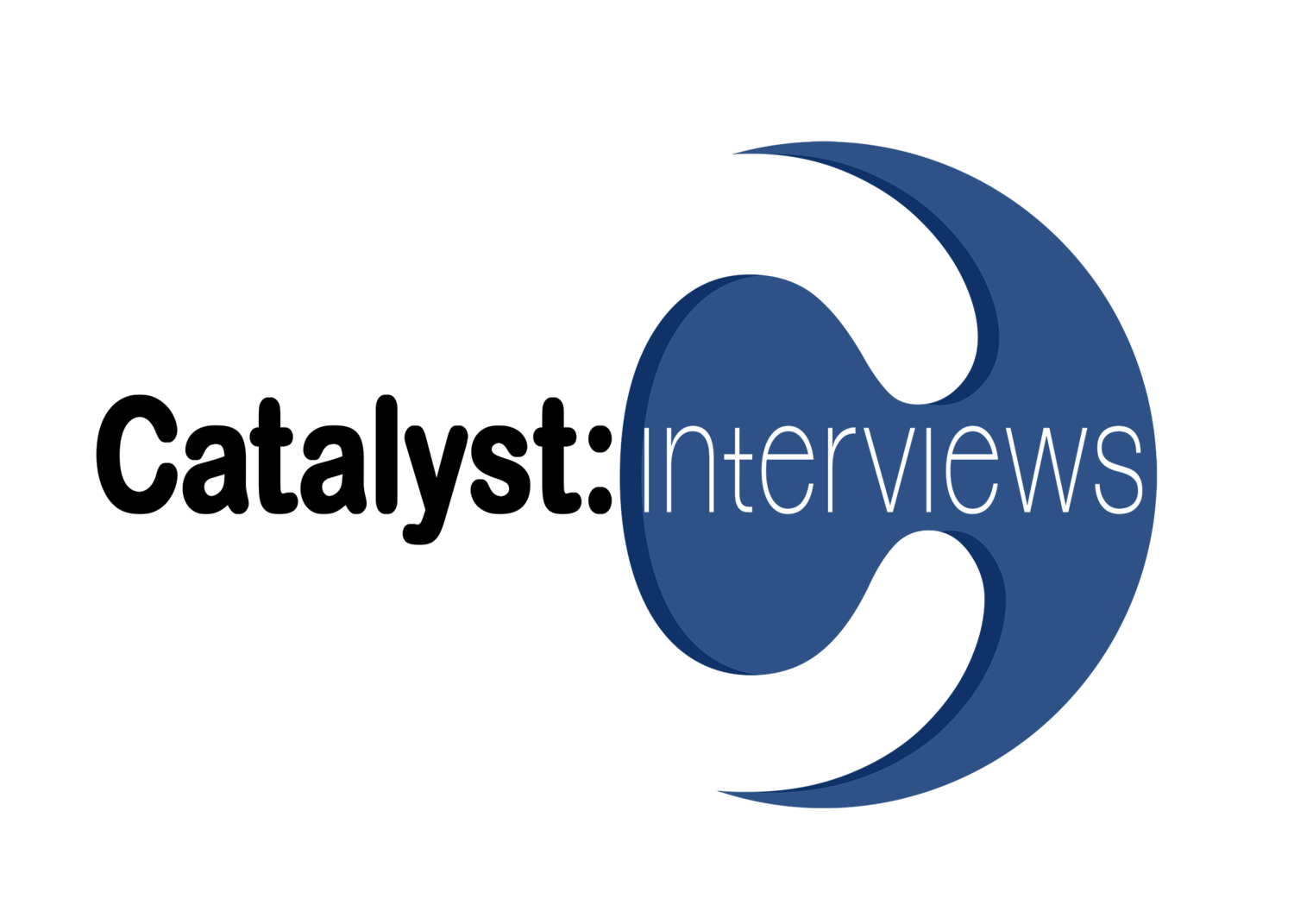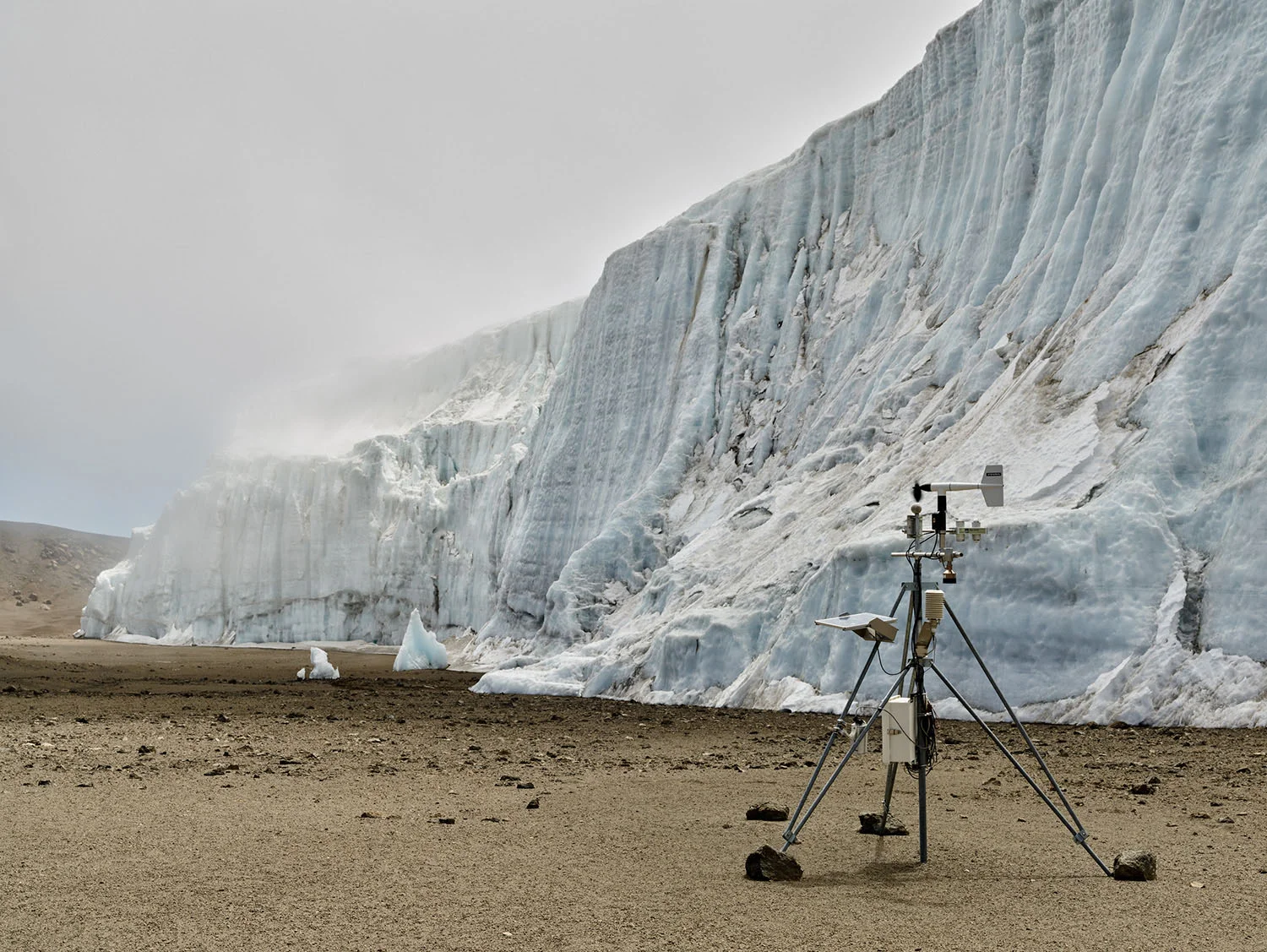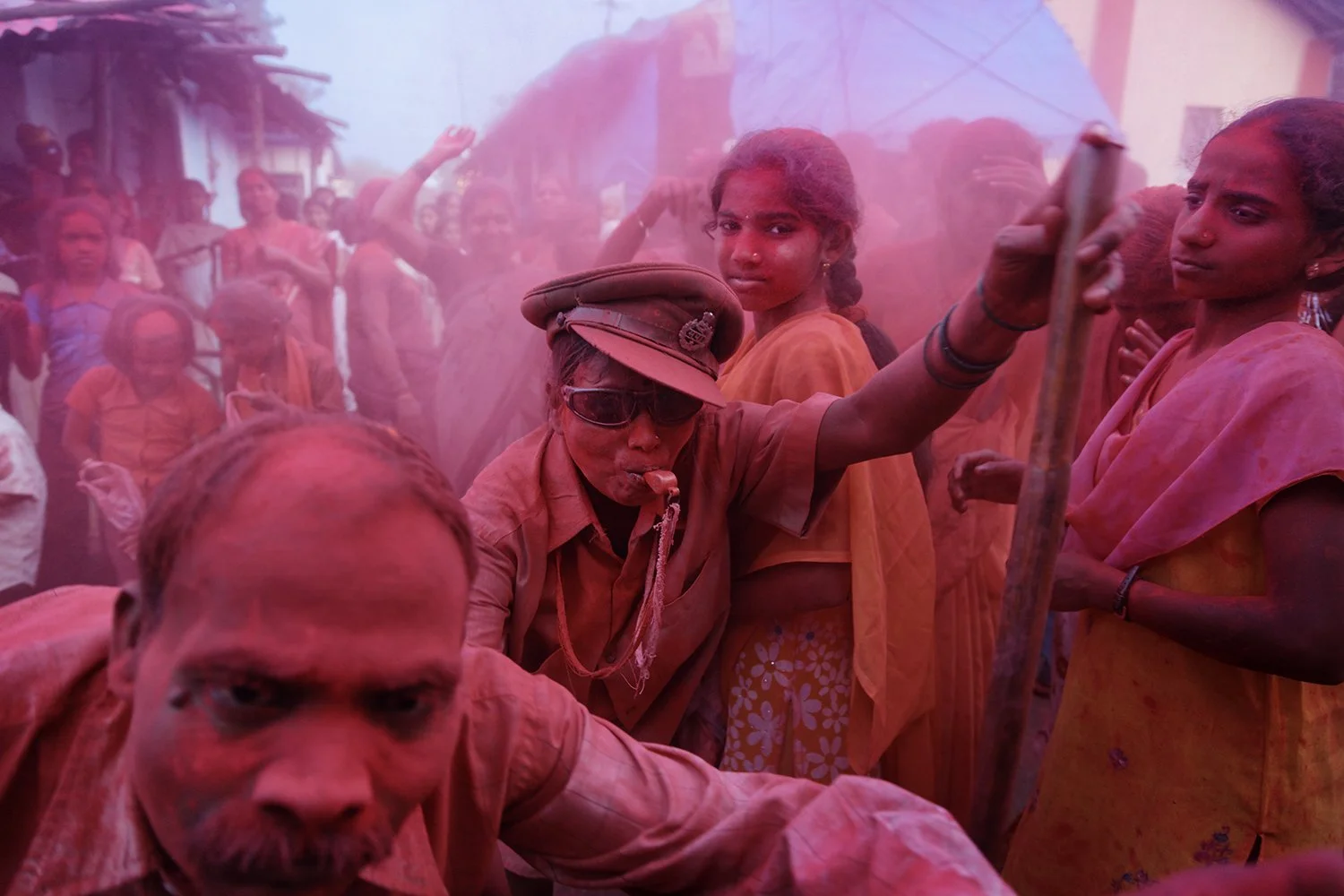Claire Dibble
I honestly wonder sometimes how much the general public knows about the effort that goes into projects that those in the arts put forth. For photographers, I think it’s still thought that we simply click the shutter at a scene and the work is done. Most especially in the digital, Instagram heavy world we all circle around now. Invisible are the planning, building, scheduling, funding, printing, framing, marketing, and….yeah, you get the idea. Years and years of studying and experience go into the careers of those in the arts that no one will ever see or care about, and that’s a bit unfortunate. It doesn’t change a thing though - we’d do it all again and again in a heartbeat if we needed to. That damn overused word passion keeps creeping back for another go at us all.
In light of this recurring realization, I often come across those that put forth an unprecedented amount of incredible effort in striving to complete a project. For me, Claire Dibble is one of those whom I find inspiring when it comes to forming a game plan and then allowing the universe to have its say in how and what you accomplish. It takes a lot of courage to make these kinds of plans - and even more to execute them. Her recent journey, via kayak, from source to sea along the Columbia River over the course of three and a half months, is such a project. Dubbed Watershed Moments, it was her calling to document this experience and bring it back for all of us to experience through her eyes and ears. What is still being formulated in terms of an interactive exhibition/installation will prove to bring the wonder and beauty of Mother Nature to the forefront. I wanted to take a moment in the midst of her endeavors for her to give us all some insight into what it took for her to complete such an adventurous plan. Her project makes me think about immersing myself so far into a project that it takes 24/7 in regards to the time involved, and all while in the middle of an ever-changing environment. Someday, maybe…until then I can at least dream about it. For now, however, we get to read about how Claire did exactly that.
Bio -
Claire Dibble is a photographer working on mixed and multimedia projects that reflect her interest in people and the environment. She is currently looking at the ways in which people interact with nature, the privilege inherent in remote interactions in wild places, and the impacts of such. She is based in Golden, BC and travels frequently for residencies and projects. Her most recent project involved paddling the length of the Columbia River in a self-made kayak, a 3.5 month photographic exploration in 2019.
Interview -
Michael Kirchoff: Every photographer experiences that spark that drives them into the direction of image-making. How did you get your start, and what were your early influences?
Claire Dibble: As a little kid I would absorb all that I could from magazines like National Geographic, long before I could read the articles. I’ve always loved seeing the world through photographs. When I was in college I spent a semester in Cuba and that was when I really started shooting, started to feel the thrill of image-making.
MK: What is it that you get out of creating photographs? Is there an overriding theme in your work that you feel best represents you as an artist?
CD: I use the camera as a tool for noticing the world around me, for paying closer attention to patterns, details, quality of light, etc. I think my noticing skills have strengthened and I perhaps don’t need to lean on the camera to be present as much as I once did, but I still find myself studying what’s in front of me in a different way when I’m looking through a lens.
MK: What is your primary objective in photography?
CD: To be present as often as possible, to bring attention to the unique qualities of even mundane moments, and to appreciate what’s here now. In so doing, I hope to allow viewers to feel some sense of connection to the subject, or to their own experience of being present in daily life.
MK: Your love of adventure and the outdoors is clearly at the forefront of your work. Is there a statement or message you are conveying with the images you produce?
CD: Not sure how successful I am in conveying the message, but my hope is to encourage a sense of connection to self, to one another, and to the natural world. I’m definitely not interested in encouraging people to go be alone in wild places if that doesn’t appeal to them. I’d love for people to see my work and then spend a few minutes later that day seeing the world around them in a slightly new way, maybe noticing the gradient of color in the sky, or the way some hardy weed has grown up through the sidewalk, or observing the character of a bird that had become part of the background until now.
MK: What is it that inspires you to decide upon a particular project?
CD: Like so many creative people, I have way more ideas for projects than time, energy, or funding would allow. I pitch a lot of ideas to funders, get a lot of rejection letters, and go with whichever ones get someone on the other end excited enough to throw me a bone. Sometimes I try again and again with the same project, if it’s something I can’t get out of my head.
MK: I’d been following along with your recent travels along the Columbia River for your project, Watershed Moments via your newsletter updates. This was quite the endeavor, being so all-encompassing of your time and efforts. What brought you to this particular project, what were some of the challenges you had to overcome, and do you feel the outcome is what you were reaching for?
CD: There were several things that brought this project to the forefront for me. I wanted to spend a large chunk of time outside and with the freedom to explore photographically. I wanted to take on an exciting travel adventure but I didn’t want to fly around the world to do it. I wanted to learn about the Columbia River Treaty amidst the renegotiations between the U.S. and Canada, largely because I live on the upper river and it’s a topic of concern amongst my community.
There were plenty of challenges, mostly related to carrying all my gear in a small kayak for over 3 months. I sacrificed other luxuries in order to be able to bring cameras. Keeping batteries charged was a challenge, as was backing up imagery when I had access to borrowed computers. It was also a challenge to maintain energy for creating images, so much of my focus was on paddling and keeping myself safe. It was also tricky keeping gear dry and clean. I had a lens communication error about halfway through the trip and every image from then on had to be shot at f2.8.
In terms of the outcome, it’s hard to say what will come of the project at this stage. I’m completely satisfied with the experience of being out there, with everything I learned about both the river and myself, and with the interactions I had along the way. I can’t predict how the work that I created then (or will create in the months after) might arrive in the world. I showed small prints in two different galleries as I traveled, shipping new batches of images each week through an app on my phone, but I hope to also have a final exhibition that will show larger prints and will also include the kayak I built for the trip.
MK: On your dedicated website for Watershed Moments, you state that you had no concrete plan for how the project would play out, but rather to let the river and the people you met along the way guide your imagery. Was this a different way of working for you, and in retrospect, do you feel that it was a successful decision to do so?
CD: I’m not sure I could have done it any other way. There were times when I tried to control the process, but the nature of traveling by river and responding to limitations of weather made it such that I couldn’t be sure of arriving in a certain place at a set time, or meeting up with specific people along the way. One major shift in my process happened as I traveled, related to how I interacted with potential portrait subjects. In the past I’ve used my camera as an excuse to approach people, chatting them up after asking if I could photograph them. But this time around I was asking people about their relationship to the river and I often chose not to bring the camera into that discussion at all. It meant that I passed up many possible portraits, but I felt that the quality of interaction was so much stronger without changing the dynamics by putting a big camera between us. This was a huge shift for me, one that I struggled with throughout the travels, but I felt that in any given moment, I was making the right decision by being entirely present with people I met. I don’t have the imagery to show for it, but the interactions were pure gold.
MK: Is there a long term goal for Watershed Moments?
CD: I plan to sit down with the images, video clips, and audio that I captured in the months on the water and build a body of work that could be exhibited in a way that brings the experience of being on this highly altered river system to life for viewers. I also expect that I’ll return to a few areas along the river that were particularly confounding, places that I didn’t feel I’d finished with when I paddled on to the next section. I’ve begun submitting proposals for one such deeper dive, and I’m interested in incorporating some installation work into future projects related to the river.
MK: Any exceptionally interesting stories from this recent journey?
CD: It seems crazy to say, but no single part of it feels exceptional. The littlest moments that were part of each day out there were quite special to me and together they add up into something exceptional. There were some scary moments (mostly related to lightning, or in some cases, drunk men). Though I didn’t have any impressive interactions with wildlife, each time I met an animal face to face was a true joy. I met so many kind, generous, curious people, many of whom had different values and views than me, and I really enjoyed hearing their perspectives of the river and I practiced listening with an open mind.
MK: In looking back at your time on the Columbia River, and after all the planning and preparations you had done beforehand, is there anything you wish you might have done better or differently now that this latest adventure has come to a close?
CD: Not exactly. I don’t wish that I had done it differently per se, but I didn’t really take into account how fatigued I would be from all the paddling and managing logistics. Each day involved countless micro decisions about my safety and progress, often in relation to unpredictable weather and other factors outside of my control. After a couple months on the water, I had less energy available for photography, for interacting with strangers, for recording audio. I continued to shoot and record as I wrapped up the trip, but not with the same fervor I started.
MK: I had originally come across your work while jurying for Photolucida’s Critical Mass program for 2018, I believe. Do you often seek out an audience for your photographs in this way, and have there been many successful connections made through your efforts? Does social media play a role in this at all?
CD: I don’t often submit to programs like Critical Mass, but a photographer I met at a residency suggested it was worthwhile. I put the effort into reaching out to jurors and attempted to build connections that way, and perhaps those will blossom in the future but to date, I haven’t had any specific opportunities arise out of that program.
MK: Do you study what others are doing, and do you find their influence in your own image-making?
CD: I follow some photographers I admire on social, but I wouldn’t say I study the work of others. I find a lot of inspiration in the works of many other types of artists, and probably spend more time studying other mediums than photography. I couldn’t say if that exposure is impacting my photographic work or not, but I definitely enjoy immersing myself in work that is completely unrelated to my practice.
MK: I would imagine that taking so much time paddling along the river you have had quite the benefit of being alone with your thoughts. Do you feel that this journey and this time have shaped or changed your process, intentions, or direction in any way?
CD: All that time and space to think and to chew on big questions was such a gift for me. I’ve always loved being alone in nature, but this extended period was precious. My senses changed over time, I became more sensitive to sounds, smells, the direction of a breeze on my face, all of it. I’m quite certain that this project has changed me, but I can’t articulate all the ways it has just yet. I think it brought me closer to my values, made it clearer what I care about.
MK: In speaking to future generations of photographers, do you have any words of wisdom to those setting out to make their own mark in the photographic world?
CD: Choose your own route. Bringing your perspective to the world doesn’t have to follow a formula, in fact, it probably will be more interesting and more impactful if it doesn’t follow a formula. Do it your way. And be prepared to lean on another source of income as you do it.
MK: After this long and adventurous journey down the Columbia River, have you set your sights on what you might do next? Something more or less epic? Or, is it time to take a breather and see what your latest project brings you?
CD: I’m proposing projects related to specific locations along the river right now, and I’m also proposing dedicated portrait work to see if this shift in my relationship to photographing people is malleable. I don’t have another epic adventure in the works at the moment, but I definitely am considering ways I can spend more time outside than at the computer.
You can find more of Claire's work on her website here.
All photographs, ©Claire Dibble.








